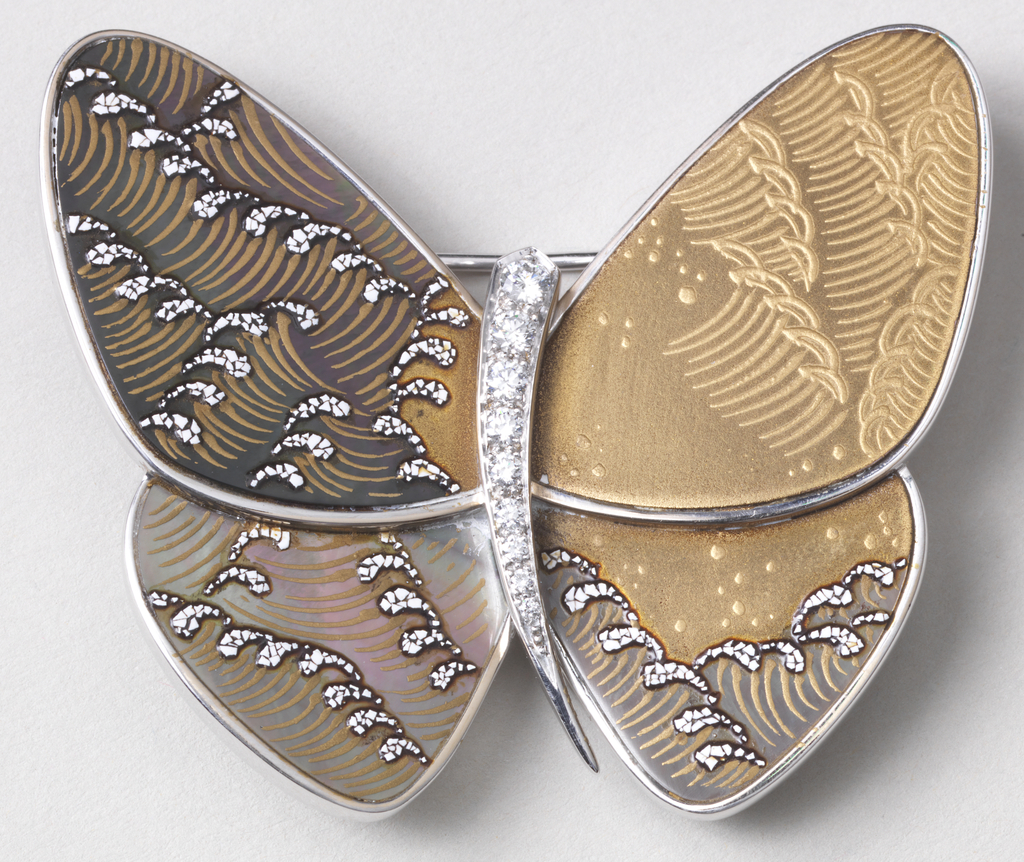When I saw a few of these wonderful butterfly brooches while creating the checklist as curator of Cooper-Hewitt’s 2011 exhibition Set in Style: The Jewelry of Van Cleef & Arpels two things came immediately to mind. The first was what perfect Cooper-Hewitt objects they were, as examples of jewelry design, and as examples of Japanese lacquerwork, a technique represented in the collection but not in jewelry. The wonderful combination of historic techniques from two cultures combined to create a contemporary object appealed to me for the collection.
The other thought was how wonderful a whole cluster of butterflies would look together in the former conservatory of the Carnegie Mansion, now part of the Museum, with the greenery of the garden around them. Fortunately, the exhibition designer agreed with me, and created a large bubble for them right on access with the openings to the conservatory. In between came a great search to see how many butterflies could be found for the installation. What I found was that although the group was a great effect, I also was drawn to study the individual characteristics of each one.
When Van Cleef & Arpels said they would be willing to donate two of the butterfly brooches to the collection, choosing from a number of designs made me appreciate the individual qualities of each, while I weighed the design merits of the ones I wanted to present. The two that I chose are quite different.

The butterfly form is created in gold with a mother-of-pearl base in the Van Cleef & Arpels workshops. The pieces are then sent to Japan where the lacquering is created to previously approved designs based on Japanese symbolism. These master craftsmen have been trained in centuries-old lacquering techniques, such as those used in lacquer inro, flattened cylindrical boxes with compartments that often held medicine. Junichi Hakose, maker of the butterfly’s lacquer renders traditional design sources with a modern eye, enhancing them with the use of materials such as eggshell worked into the lacquer for innovative finishes.
The name Araiso U refers to water. The lacquer shows large waves, a motif based on the Japanese sea found in Japanese prints and in Christopher Dresser’s Japanese-influenced ceramics.
To the Japanese maker, water represents strength, power, clearness, depth and unity. It can be calm as well as aggressive. Pure and serene, water may be fun or inspire fear; it is an uncontrollable element. Here it seems both powerful and fun as it gives texture to the butterfly’s wings, while the white surf capping the waves is rendered in diamonds. This referencing the past while creating something new, is part of the continuum of design that I like to seek out in good contemporary design.
You can find the catalogue for Set in Style: The Jewelry of Van Cleef & Arpels at shop.cooperhewitt.org

